How do I determine what fly rod I need for trout? I work backwards.
I begin with five key questions:
- What size flies am I going to fish?
- How heavy and/or wind resistant are those flies?
- How close or far away will I fish?
- How much wind do I expect?
- What types of presentations will I need?
Those five questions tell me almost everything I need to know in order to choose … drumroll, please … no, not a fly rod. A fly line and a leader.
I pick my fly line and leader based on my answers to those five questions. If I’m fishing size 18 dry flies to spooky, surface-feeding trout at 35’, I’ll need a particular fly line and leader combination. If I’m high-sticking a couple of weighted nymphs through a waist-deep run, I want a different line/leader combo. That’s also true if I’m casting a streamer 60’ to the far bank.
To recap: the size and weight of my fly, the distance I’m casting, the wind (or lack thereof), and the type of presentation determine the appropriate fly line and leader. The fly line and leader inform my decision about the length, weight and action of my fly rod.
Simple, right? Well, sometimes yes and sometimes no.
If I’m only going to ask my rod to do one thing during my time on the water, then my choices are more obvious. Say I want to fish medium-sized dry flies to rising fish and I’m confident I’ll be casting between 30’ and 40’ under relatively calm conditions. It’s easy for me to pick out the best line/leader combo for that scenario and then choose a rod that’s designed to handle that particular task.
Let’s say, though, that I’m only going to use that set-up until the afternoon wind starts to blow hard, at which point those rising trout will disappear and I’m going to switch over to a size 8 grasshopper — or maybe even the ubiquitous hopper/dropper combination.
Now I need to ask myself whether the line & leader I was using earlier will still work — which it won’t —and whether rebuilding my leader will suffice or whether I need to change both the leader and the fly line. The answer to those questions will help me determine whether to use the same rod I favored earlier, or whether I need to choose a new rod to match the new line/leader/fly combination that the conditions are demanding.
Here’s something to think about. We don’t use a 9’ 5 weight fly rod on a regular basis because it’s always the best tool for a particular angling situation. We use a 9’ 5 weight because it’s a solid choice for such a wide range of potential scenarios.
There are certain decisions fly fishers will always need to make. When we change flies and techniques, we also have to decide whether to adjust our line and leader combination — and perhaps even change our fly rod. For example, an 8’ 6” 4 weight might be the perfect setup for dry fly fishing on a small spring creek, while a 9’ 6 weight might be the ideal rod for fishing hopper imitations on a big western river. Do we carry two rods, or do we opt for one rod that will handle both situations?
As you might imagine, the answer to that question ultimately depends on the flies we will use, the distance we plan to cast, the presentations we will choose, and the amount of wind we can expect.
Finally, there’s one factor that we didn’t account for earlier: the size of the fish. And that’s because the vast majority of the trout we’re going to catch here in the Lower 48 are somewhere between 6 and 22 inches. Any weight fly rod, from a 3 weight to a 6 weight, will play and land those trout effectively as long as our tippet isn’t too light.
I hesitate to share hard & fast rules, but my advice for anyone who fishes for normal sized trout — say, 2 feet and less — is to focus on the questions up above. We don’t match the size of the rod to the trout we hope to catch. We match the line & leader to the type of fishing we anticipate.
At the end of the day, it’s not all that complicated. If we know the size of the flies we’ll fish, and how heavy they are, and what presentation we’ll utilize, and how far we’ll cast, and what the wind is likely to do, we can pick the right line and leader for the job. Once that’s clear, we can choose the rod — or rods — that make the most sense for our time on the water.






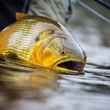









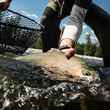




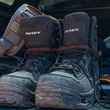




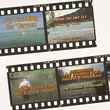
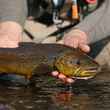

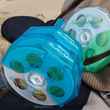
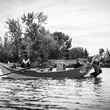
Comments
Leonard Zaragoza replied on Permalink
Your information on rod choice is a great read , but I feel it is aimed toward individuals who have been fishing for a while and are considering a new rod . For a beginner a 8’5” 5 wt. rod is a good jump off point . Great for learning to fish dries and nymphs and some streamers . When considering wind and heavier nymphs a 6 wt 9.5 - 10’ is an excellent choice . Just my opinion .
George replied on Permalink
One other consideration…where fishing in terms of room/cover: smaller, tree-laden streams versus larger, more open bodies of water.
Pages